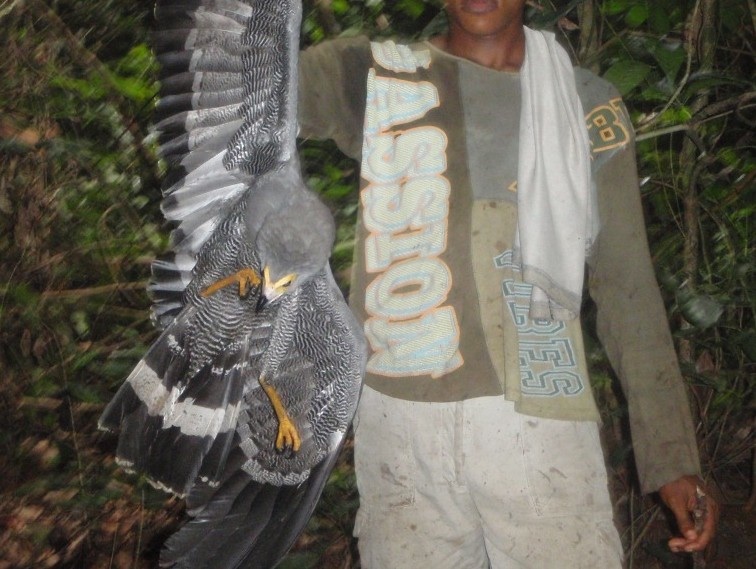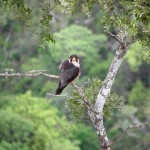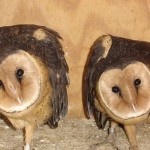An update on Raptor Research in Ebo Forest, Cameroon by Robbie Whytock
Raptor research in the Ebo forest took an important step forward in 2011 on receiving funding from The Peregrine Fund, as well as the Raptor Research Foundation’s Leslie Brown Memorial Award and the British Ecological Society’s Small Ecological Project Grant scheme. These funds are being used to survey hunter’s camps in the Ebo forest, searching for the remains of raptors and other birds. Data will be used to assess the scale of hunting raptors for food and to try and develop indirect measurements of hunting pressure. The project was initiated in June 2011 and we hope to have completed data collection by March 2012.
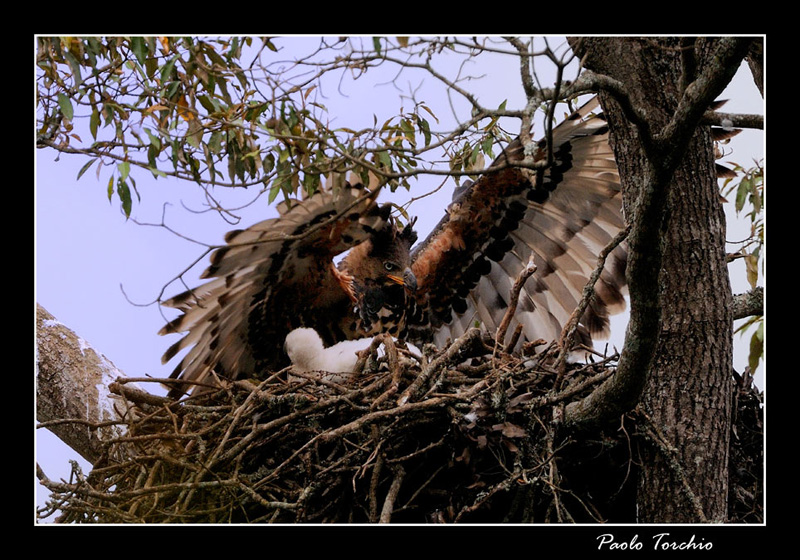
Results from the project may have implications for raptor conservation in the wider region. For example, hunters from the village of Batoke, bordering the Mount Cameroon National Park, openly admitted to hunting crowned eagles (Stephanoaetus coronatus). They also suggested that encounters with crowned eagles had reduced during their career (as long as 15 years) and they now expected to encounter only one eagle per annum. As in the Ebo forest, hunters here are familiar with crowned eagle vocalisations and with the techniques used to mimic crowned eagle calls. This is worrying and suggests that the technique is used throughout Cameroon’s forest belt, as Mount Cameroon is distant from the Ebo forest in both cultural and logistical terms. Although crowned eagles are likely to be among the most vulnerable species because of their low reproduction rate, more common species such as palm-nut vultures (Gypohierax angolensis) and gymnogenes (Polyboroides typus) are also hunted regularly (see photo). It appears that any medium to large raptor is targeted when the opportunity arises and it is essential that this off take is measured quantitatively so that sustainability can be assessed.
Mammal research is also developing in the Ebo forest and intensive transect surveys are now being carried out. Several field assistants received raptor recognition training in June 2011 and now record crowned eagle vocalisations when walking transects. This valuable data will allow us to begin monitoring crowned eagle populations in the Ebo forest and to detect changes over time.
The single crowned eagle nest located in 2009 was monitored throughout 2010 but remained unattended and had disappeared by July 2011. This was disappointing but we did observe a pair of crowned eagles displaying above our base camp (Bekob) in July 2011 and are probably nesting near by. Hunting has decreased generally in the Bekob area as a result of the EFRP’s presence and this may have a positive affect on raptors in the local vicinity, as has been observed with primates.
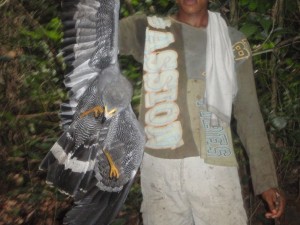
We hope to further train local field assistants to identify raptors in the field by both site and sound and increase monitoring of other species in the future. The Ebo forest is undergoing the transition to National Park status and although the process is slow, this will undoubtedly be positive for raptors and their conservation in Cameroon.
More information about the Ebo Forest Research in Cameroon can be found at their website.

